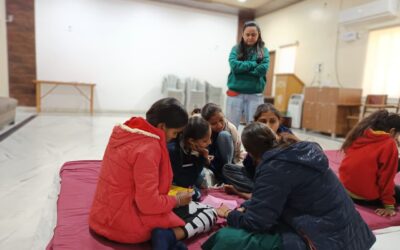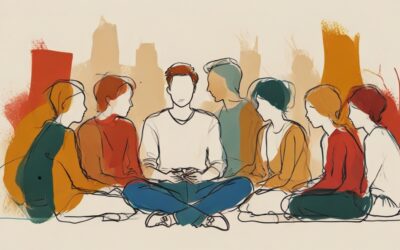My father grew up in a village named Purana in Jagatsinghpur district of Odisha. My grandmother, whom I fondly call bou (mother, in Odia) still lives there. As a child, I visited and stayed there during summer and winter vacations. However, most of my ideas about the village did not come just by being there, but because of several reasons.
Firstly, I was a shy child who did not feel confident interacting with anyone above my age, apart from family. Secondly, being a girl, I was given less opportunities to explore the village than my brother and finally, I feel I was not a curious kid but rather loved being in my comfort zone. All I knew about Purana got substantiated due to my interaction with bou and her stories about the village. It would not be a lie to say that I lived the experience through her words.
The mud houses, numerous coconut trees, mango trees lining the farms, canal being the major source of water, monkeys jumping from houses, an extremely close knit community, scooters and motorbikes being the only means of transport, and narrow kachcha roads are some elements that appear before me when anyone refers to a village.
Recently, when I was about to enter Iswal, a village near Udaipur in Rajasthan, I had all these things in mind, knowing fully well that the vegetation would be different because the village I had seen was in coastal plains. However, apart from that, I pretty much expected a similar setup. To my surprise, the geography as well as the personal experience was quite different.
There were several signs of modern civilization. The national highway close by, was extremely clean, wide and well maintained. It actually separated the village from between. I went on to explore the side which was vegetation dominant. The practice of step-farming was something I had always read in books. To actually see it in Aravali hills, was an absolute delight.
There was peculiar door art at the entrance of affluent people in the village, which reminded me of the art on mud walls of Purana. Such decorative features were so distinct that I stood there and stared at them for a moment to appreciate the naive beauty. The way women dress in both the places is also very different. In Purana, all women wear cotton sarees while here in Iswal, women wore ghaghra choli. The common part is, that in both places, women keep their head covered. In Iswal, I noticed that almost all women had nose piercings, wore elaborate nose rings and heavy payal (anklet) on both their ankles. This, however, is not a common trait among women in my village. The jewelry is minimal in Purana.
There is another thing that left me in deep thought. Earlier, whenever I read or heard about how caste system is highly prevalent in India, I could never relate to it. That’s because in Purana, or anywhere else, no one ever asked me about my caste, probably for obvious reasons that they knew my grandfather and father, and hence, their caste. There was no need for them to ask mine, which made me question the statement, ‘Caste is a deep rooted problem of Indian society and it is difficult to get it out of the system.’ It could be because of this that I never understood the cause for reservations.
On the other hand, when I was interacting with people in Iswal, there were several times women, men, and even children inquired about my caste. I was completely taken aback when it happened for the first time. After roaming around a bit more, I had to deal with another shocking revelation. The clusters of households were formed in a certain social pattern, such that people of the same caste lived around each other.
This made me think how the indifference towards caste system comes from a privilege of belonging to a high caste, where one does not face any difficulties because of the system. Not everyone has this choice of believing or not believing in caste.
At the end of the day, while leaving Iswal, nostalgia hit me hard. I wished to be back in my village, sitting in the front yard, playing unfair ludo games and drinking coconut water, with my brother. However I wondered, whether it would be the same if I were aware of the social dynamics of Purana. How different would it be if I was to call Iswal my village!
Featured Image: Flickr




0 Comments